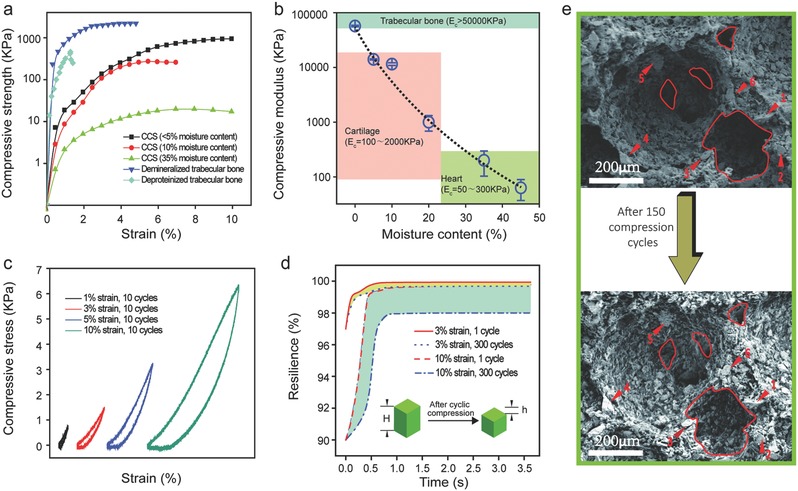Figure 2.

Moisture‐dependent mechanical properties of CCS. a) Compressive stress–strain relations of CCS (ceramic content = 83 wt%) with different moisture contents (<5, 10, and 35 wt%), comparing to that of demineralized trabecular bovine femur (DMB) and deproteinized trabecular bovine femur (DPB).36 b) Moisture‐dependent compressive modulus (E c) of CCS in comparison to that of different tissues. c) Compression–decompression loop of CCS with 45% moisture content subjected to different strains. d) Resilience versus recovery time relation of CCS with 45% moisture content subjected to different compressive cycles and strains (Resilience = [(H − h)/H] × 100%). e) SEM images showing the microstructure of CCS (ceramic content = 86 wt%) before and after 150 compression cycles (max. strain = 10%). The red lines outline pore morphology and the numbers indicate large ceramic particles, both of which remain unchanged after compression.
